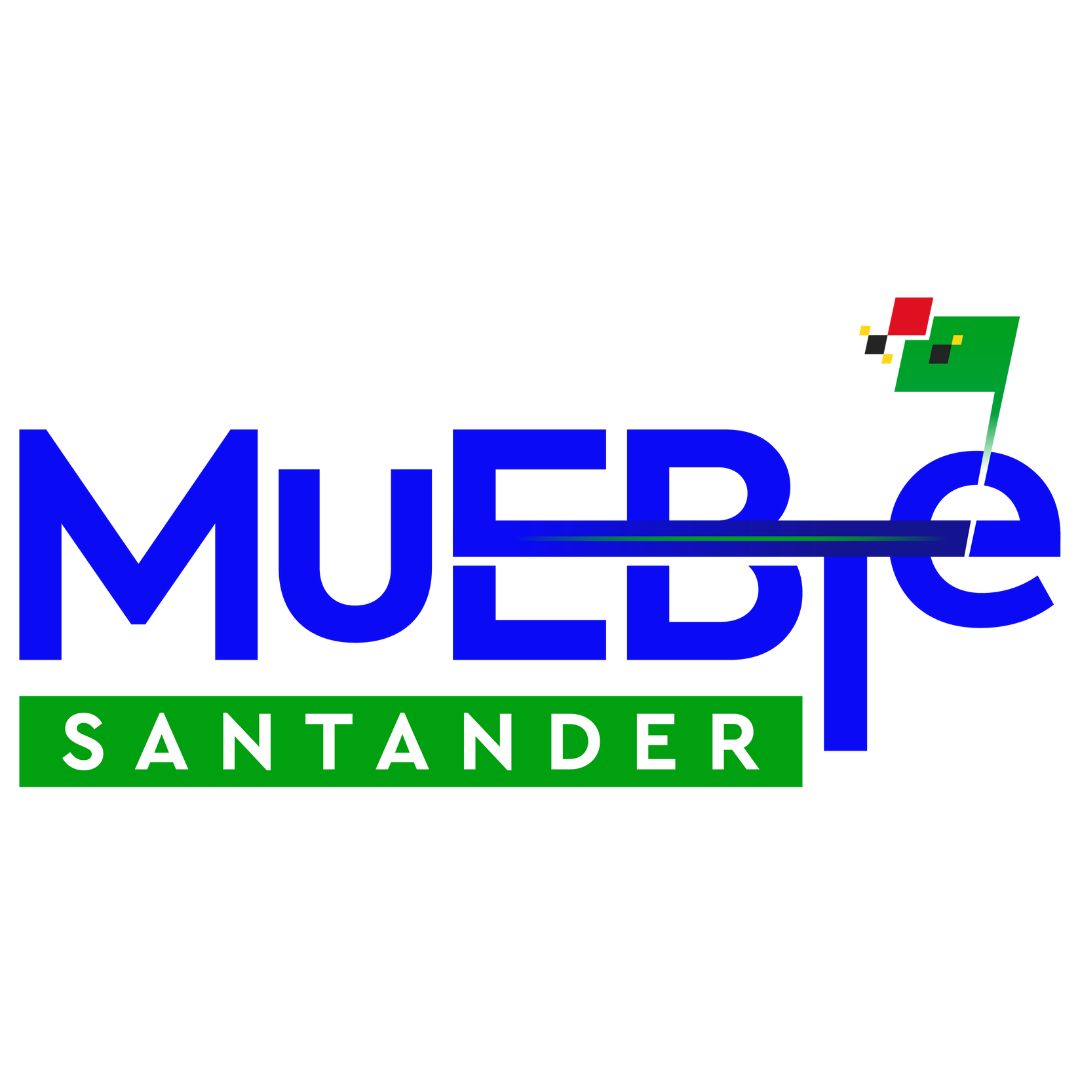LA UDES PUBLICA
- Fecha de publicación:
- 2019-11-29
- Tipo:
- Conference Paper
- Número de artículo:
- 012137
- Identificación:
- SCOPUS_ID:85077071335
- eID:
- 2-s2.0-85077071335
- Nombre de la revista:
- Journal of Physics: Conference Series
- Autor(es) UDES:
- Martinez-Amariz A.
- Otros Autores:
- Maués C.S., Guimarães C.S.
- Autor Principal:
- Maués C.S.
- Áreas del conocimiento:
- Physics and Astronomy (all)
- Ranking
- 20105
- Tipo
- Conference Proceeding
- ISSN
- 17426588
- eISSN
- 17426596
- Región
- Western Europe
- País
- United Kingdom
- Volumen
- 1386
- Cobertura
- 2005-2022
- Fecha de publicación:
- 2019-11-29
- Tipo:
- Conference Paper
- Número de artículo:
- 012063
- Identificación:
- SCOPUS_ID:85077068725
- eID:
- 2-s2.0-85077068725
- Nombre de la revista:
- Journal of Physics: Conference Series
- Autor(es) UDES:
- Tiria L.C., Zamudio W.H., Bellon D.
- Otros Autores:
- Useche I.E.
- Autor Principal:
- Tiria L.C.
- Áreas del conocimiento:
- Physics and Astronomy (all)
- Ranking
- 20105
- Tipo
- Conference Proceeding
- ISSN
- 17426588
- eISSN
- 17426596
- Región
- Western Europe
- País
- United Kingdom
- Volumen
- 1386
- Cobertura
- 2005-2022
- Fecha de publicación:
- 2019-11-29
- Tipo:
- Conference Paper
- Número de artículo:
- 012104
- Identificación:
- SCOPUS_ID:85077065252
- eID:
- 2-s2.0-85077065252
- Nombre de la revista:
- Journal of Physics: Conference Series
- Autor(es) UDES:
- Mantilla K., Suárez-Barrera M., Rueda-Forero N.J., Guarín O.D., Gómez F.R., Durán S.M., Tiria L.C.
- Autor Principal:
- Mantilla K.
- Áreas del conocimiento:
- Physics and Astronomy (all)
- Ranking
- 20105
- Tipo
- Conference Proceeding
- ISSN
- 17426588
- eISSN
- 17426596
- Región
- Western Europe
- País
- United Kingdom
- Volumen
- 1386
- Cobertura
- 2005-2022
- Fecha de publicación:
- 2019-11-29
- Tipo:
- Conference Paper
- Número de artículo:
- 012147
- Identificación:
- SCOPUS_ID:85077062271
- eID:
- 2-s2.0-85077062271
- Nombre de la revista:
- Journal of Physics: Conference Series
- Autor(es) UDES:
- Núñez J.J.R.
- Autor Principal:
- Núñez J.J.R.
- Áreas del conocimiento:
- Physics and Astronomy (all)
- Ranking
- 20105
- Tipo
- Conference Proceeding
- ISSN
- 17426588
- eISSN
- 17426596
- Región
- Western Europe
- País
- United Kingdom
- Volumen
- 1386
- Cobertura
- 2005-2022
- Fecha de publicación:
- 2019-11-29
- Tipo:
- Conference Paper
- Número de artículo:
- 012058
- Identificación:
- SCOPUS_ID:85077053941
- eID:
- 2-s2.0-85077053941
- Nombre de la revista:
- Journal of Physics: Conference Series
- Autor(es) UDES:
- Diaz C.E., Daza D., Arámbula C.I.
- Autor Principal:
- Diaz C.E.
- Áreas del conocimiento:
- Physics and Astronomy (all)
- Ranking
- 20105
- Tipo
- Conference Proceeding
- ISSN
- 17426588
- eISSN
- 17426596
- Región
- Western Europe
- País
- United Kingdom
- Volumen
- 1386
- Cobertura
- 2005-2022
- Fecha de publicación:
- 2019-11-29
- Tipo:
- Conference Paper
- Número de artículo:
- 012115
- Identificación:
- SCOPUS_ID:85077053483
- eID:
- 2-s2.0-85077053483
- Nombre de la revista:
- Journal of Physics: Conference Series
- Autor(es) UDES:
- Bellon D., Martínez-Amariz A.
- Otros Autores:
- Montes E.
- Autor Principal:
- Bellon D.
- Áreas del conocimiento:
- Physics and Astronomy (all)
- Ranking
- 20105
- Tipo
- Conference Proceeding
- ISSN
- 17426588
- eISSN
- 17426596
- Región
- Western Europe
- País
- United Kingdom
- Volumen
- 1386
- Cobertura
- 2005-2022
- Fecha de publicación:
- 2019-11-29
- Tipo:
- Conference Paper
- Número de artículo:
- 012093
- Identificación:
- SCOPUS_ID:85077051445
- eID:
- 2-s2.0-85077051445
- Nombre de la revista:
- Journal of Physics: Conference Series
- Autor(es) UDES:
- Acevedo J.C., Solano S.P., Durán J.M., Posso F.R.
- Otros Autores:
- Arenas E.
- Autor Principal:
- Acevedo J.C.
- Áreas del conocimiento:
- Physics and Astronomy (all)
- Ranking
- 20105
- Tipo
- Conference Proceeding
- ISSN
- 17426588
- eISSN
- 17426596
- Región
- Western Europe
- País
- United Kingdom
- Volumen
- 1386
- Cobertura
- 2005-2022
- Fecha de publicación:
- 2019-11-29
- Tipo:
- Conference Paper
- Número de artículo:
- 012100
- Identificación:
- SCOPUS_ID:85077051014
- eID:
- 2-s2.0-85077051014
- Nombre de la revista:
- Journal of Physics: Conference Series
- Autor(es) UDES:
- Posso F., Mantilla N.
- Autor Principal:
- Posso F.
- Áreas del conocimiento:
- Physics and Astronomy (all)
- Ranking
- 20105
- Tipo
- Conference Proceeding
- ISSN
- 17426588
- eISSN
- 17426596
- Región
- Western Europe
- País
- United Kingdom
- Volumen
- 1386
- Cobertura
- 2005-2022
- Fecha de publicación:
- 2019-11-29
- Tipo:
- Conference Paper
- Número de artículo:
- 012141
- Identificación:
- SCOPUS_ID:85077045027
- eID:
- 2-s2.0-85077045027
- Nombre de la revista:
- Journal of Physics: Conference Series
- Autor(es) UDES:
- Torrado K.A., Duran L.M., Tiria L.C.
- Otros Autores:
- Cristancho S.L., Quintanilla E., Céspedes E.
- Autor Principal:
- Torrado K.A.
- Áreas del conocimiento:
- Physics and Astronomy (all)
- Ranking
- 20105
- Tipo
- Conference Proceeding
- ISSN
- 17426588
- eISSN
- 17426596
- Región
- Western Europe
- País
- United Kingdom
- Volumen
- 1386
- Cobertura
- 2005-2022
- Fecha de publicación:
- 2019-11-29
- Tipo:
- Conference Paper
- Número de artículo:
- 012075
- Identificación:
- SCOPUS_ID:85077035408
- eID:
- 2-s2.0-85077035408
- Nombre de la revista:
- Journal of Physics: Conference Series
- Autor(es) UDES:
- Bellon D., Zamudio W.H., Tiria L.C., Durán S.M.
- Otros Autores:
- Useche I.E., Peña J.
- Autor Principal:
- Bellon D.
- Áreas del conocimiento:
- Physics and Astronomy (all)
- Ranking
- 20105
- Tipo
- Conference Proceeding
- ISSN
- 17426588
- eISSN
- 17426596
- Región
- Western Europe
- País
- United Kingdom
- Volumen
- 1386
- Cobertura
- 2005-2022
- Fecha de publicación:
- 2019-11-29
- Tipo:
- Conference Paper
- Número de artículo:
- 012052
- Identificación:
- SCOPUS_ID:85077032363
- eID:
- 2-s2.0-85077032363
- Nombre de la revista:
- Journal of Physics: Conference Series
- Autor(es) UDES:
- Martinez-Amariz A.
- Otros Autores:
- Peña Ballesteros D.
- Autor Principal:
- Martinez-Amariz A.
- Áreas del conocimiento:
- Physics and Astronomy (all)
- Ranking
- 20105
- Tipo
- Conference Proceeding
- ISSN
- 17426588
- eISSN
- 17426596
- Región
- Western Europe
- País
- United Kingdom
- Volumen
- 1386
- Cobertura
- 2005-2022
- Fecha de publicación:
- 2019-11-29
- Tipo:
- Conference Paper
- Número de artículo:
- 012061
- Identificación:
- SCOPUS_ID:85077020106
- eID:
- 2-s2.0-85077020106
- Nombre de la revista:
- Journal of Physics: Conference Series
- Autor(es) UDES:
- Martinez-Amariz A.
- Otros Autores:
- Peña D., Montes Vera E.
- Autor Principal:
- Martinez-Amariz A.
- Áreas del conocimiento:
- Physics and Astronomy (all)
- Ranking
- 20105
- Tipo
- Conference Proceeding
- ISSN
- 17426588
- eISSN
- 17426596
- Región
- Western Europe
- País
- United Kingdom
- Volumen
- 1386
- Cobertura
- 2005-2022
- Fecha de publicación:
- 2019-11-29
- Tipo:
- Conference Paper
- Número de artículo:
- 012059
- Identificación:
- SCOPUS_ID:85077019493
- eID:
- 2-s2.0-85077019493
- Nombre de la revista:
- Journal of Physics: Conference Series
- Autor(es) UDES:
- Arámbula C.I., Diaz C.E., Garcia M.I.
- Autor Principal:
- Arámbula C.I.
- Áreas del conocimiento:
- Physics and Astronomy (all)
- Ranking
- 20105
- Tipo
- Conference Proceeding
- ISSN
- 17426588
- eISSN
- 17426596
- Región
- Western Europe
- País
- United Kingdom
- Volumen
- 1386
- Cobertura
- 2005-2022
- Fecha de publicación:
- 2019-11-19
- Tipo:
- Conference Paper
- Número de artículo:
- 012038
- Identificación:
- SCOPUS_ID:85076643210
- eID:
- 2-s2.0-85076643210
- Nombre de la revista:
- Journal of Physics: Conference Series
- Autor(es) UDES:
- Acevedo-Paez J.C.
- Otros Autores:
- Urbina N.A., Acevedo A.Z., Becerra L.C.
- Autor Principal:
- Acevedo-Paez J.C.
- Áreas del conocimiento:
- Physics and Astronomy (all)
- Ranking
- 20105
- Tipo
- Conference Proceeding
- ISSN
- 17426588
- eISSN
- 17426596
- Región
- Western Europe
- País
- United Kingdom
- Volumen
- 1388
- Cobertura
- 2005-2022
- Fecha de publicación:
- 2019-11-19
- Tipo:
- Conference Paper
- Número de artículo:
- 012036
- Identificación:
- SCOPUS_ID:85076637535
- eID:
- 2-s2.0-85076637535
- Nombre de la revista:
- Journal of Physics: Conference Series
- Autor(es) UDES:
- Gámez-Ortiz L.P., Gónzález-Soto M.J., Diaz-Castañeda C.E.
- Otros Autores:
- Perez-Roa M.E., García-Martinez J.B., Urbina-Suarez N.A.
- Autor Principal:
- Gámez-Ortiz L.P.
- Áreas del conocimiento:
- Physics and Astronomy (all)
- Ranking
- 20105
- Tipo
- Conference Proceeding
- ISSN
- 17426588
- eISSN
- 17426596
- Región
- Western Europe
- País
- United Kingdom
- Volumen
- 1388
- Cobertura
- 2005-2022
- Fecha de publicación:
- 2019-11-19
- Tipo:
- Conference Paper
- Número de artículo:
- 012050
- Identificación:
- SCOPUS_ID:85076636656
- eID:
- 2-s2.0-85076636656
- Nombre de la revista:
- Journal of Physics: Conference Series
- Autor(es) UDES:
- Cerinza-Contento A.P., Ramirezparis-Colmenares X., Amaya-Mancilla M.A.
- Autor Principal:
- Cerinza-Contento A.P.
- Áreas del conocimiento:
- Physics and Astronomy (all)
- Ranking
- 20105
- Tipo
- Conference Proceeding
- ISSN
- 17426588
- eISSN
- 17426596
- Región
- Western Europe
- País
- United Kingdom
- Volumen
- 1388
- Cobertura
- 2005-2022
- Fecha de publicación:
- 2019-11-02
- Tipo:
- Article
- Número de artículo:
- 1659095
- Identificación:
- SCOPUS_ID:85072036449
- eID:
- 2-s2.0-85072036449
- Nombre de la revista:
- OncoImmunology
- Autor(es) UDES:
- Soto J.A.
- Otros Autores:
- Arndt C., Feldmann A., Koristka S., Schäfer M., Bergmann R., Mitwasi N., Berndt N., Bachmann D., Kegler A., Schmitz M., Puentes-Cala E., Ehninger G., Pietzsch J., Liolios C., Wunderlich G., Kotzerke J., Kopka K., Bachmann M.
- Autor Principal:
- Arndt C.
- Áreas del conocimiento:
- Immunology and Allergy, Immunology, Oncology
- Tipo
- Journal
- ISSN
- 21624011
- eISSN
- 2162402X
- Volumen
- 8
- Fecha de publicación:
- 2019-11-01
- Tipo:
- Review
- Número de artículo:
- e3203
- Identificación:
- SCOPUS_ID:85070199902
- eID:
- 2-s2.0-85070199902
- Nombre de la revista:
- Diabetes/Metabolism Research and Reviews
- Autor(es) UDES:
- Plata Ortiz S.
- Otros Autores:
- Morales Camacho W.J., Molina Díaz J.M., Plata Ortiz J.E., Morales Camacho M.A., Calderón B.P.
- Autor Principal:
- Morales Camacho W.J.
- Áreas del conocimiento:
- Internal Medicine, Endocrinology, Diabetes and Metabolism, Endocrinology
Cuartil
Q1
- Ranking
- 1488
- Tipo
- Journal
- ISSN
- 15207552
- eISSN
- 15207560
- Región
- Western Europe
- País
- United Kingdom
- Volumen
- 35
- Cobertura
- 1999-2022
- Fecha de publicación:
- 2019-10-05
- Tipo:
- Article
- Identificación:
- SCOPUS_ID:85072785863
- eID:
- 2-s2.0-85072785863
- Nombre de la revista:
- The Lancet
- Autor(es) UDES:
- Lopez-Jaramillo P.
- Otros Autores:
- Schwalm J.D., McCready T., Yusoff K., Attaran A., Lamelas P., Camacho P.A., Majid F., Bangdiwala S.I., Thabane L., Islam S., McKee M., Yusuf S.
- Autor Principal:
- Schwalm J.D.
- Áreas del conocimiento:
- Medicine (all)
Cuartil
Q1
- Ranking
- 31
- Tipo
- Journal
- ISSN
- 01406736
- eISSN
- 1474547X
- Región
- Western Europe
- País
- United Kingdom
- Volumen
- 394
- Rango de páginas
- 1231-1242
- Cobertura
- 1823-2022
- Fecha de publicación:
- 2019-10-01
- Tipo:
- Article
- Número de artículo:
- 218
- Identificación:
- SCOPUS_ID:85111087989
- eID:
- 2-s2.0-85111087989
- Nombre de la revista:
- Sports
- Autor(es) UDES:
- Cohen D.D.
- Otros Autores:
- Constantine E., Taberner M., Richter C., Willett M.
- Autor Principal:
- Constantine E.
- Áreas del conocimiento:
- Orthopedics and Sports Medicine, Physical Therapy, Sports Therapy and Rehabilitation
Cuartil
Q1
- Ranking
- 5148
- Tipo
- Journal
- eISSN
- 20754663
- Región
- Western Europe
- País
- Switzerland
- Volumen
- 7
- Cobertura
- 2013-2022
- Fecha de publicación:
- 2019-10-01
- Tipo:
- Conference Paper
- Número de artículo:
- 8995162
- Identificación:
- SCOPUS_ID:85081139139
- eID:
- 2-s2.0-85081139139
- Nombre de la revista:
- Proceedings - 14th Latin American Conference on Learning Technologies, LACLO 2019
- Autor(es) UDES:
- Muñoz Del Castillo A.
- Otros Autores:
- Muñoz M.A., Acosta Huertas L.C., Herrera E., Jimenez Toledo J., Ramos D.X.
- Autor Principal:
- Muñoz Del Castillo A.
- Áreas del conocimiento:
- Computer Science Applications, Computer Networks and Communications, Education
- Tipo
- Conference Proceeding
- Rango de páginas
- 8-11
- Fecha de publicación:
- 2019-10-01
- Tipo:
- Review
- Número de artículo:
- e000639
- Identificación:
- SCOPUS_ID:85074475271
- eID:
- 2-s2.0-85074475271
- Nombre de la revista:
- BMJ Open Sport and Exercise Medicine
- Autor(es) UDES:
- Cohen D.D.
- Otros Autores:
- Taberner M., Van Dyk N., Allen T., Richter C., Howarth C., Scott S.
- Autor Principal:
- Taberner M.
- Áreas del conocimiento:
- Orthopedics and Sports Medicine, Physical Therapy, Sports Therapy and Rehabilitation
Cuartil
Q1
- Ranking
- 2889
- Tipo
- Journal
- ISSN
- 20557647
- Región
- Western Europe
- País
- United Kingdom
- Volumen
- 5
- Cobertura
- 2015-2022
- Fecha de publicación:
- 2019-10-01
- Tipo:
- Article
- Número de artículo:
- 2368
- Identificación:
- SCOPUS_ID:85072975070
- eID:
- 2-s2.0-85072975070
- Nombre de la revista:
- Nutrients
- Autor(es) UDES:
- Gomez-Arbelaez D.
- Otros Autores:
- Sajoux I., Lorenzo P.M., Zulet M.A., Abete I., Castro A.I., Baltar J., Portillo M.P., Tinahones F.J., Martinez J.A., Crujeiras A.B., Casanueva F.F.
- Autor Principal:
- Sajoux I.
- Áreas del conocimiento:
- Food Science, Nutrition and Dietetics
Cuartil
Q1
- Ranking
- 2754
- Tipo
- Journal
- eISSN
- 20726643
- Región
- Western Europe
- País
- Switzerland
- Volumen
- 11
- Cobertura
- 2009-2022
- Fecha de publicación:
- 2019-09-30
- Tipo:
- Conference Paper
- Número de artículo:
- 012005
- Identificación:
- SCOPUS_ID:85074943331
- eID:
- 2-s2.0-85074943331
- Nombre de la revista:
- Journal of Physics: Conference Series
- Autor(es) UDES:
- Nieto Z.
- Otros Autores:
- Fernández E., Mendoza L.
- Autor Principal:
- Fernández E.
- Áreas del conocimiento:
- Physics and Astronomy (all)
- Ranking
- 20105
- Tipo
- Conference Proceeding
- ISSN
- 17426588
- eISSN
- 17426596
- Región
- Western Europe
- País
- United Kingdom
- Volumen
- 1329
- Cobertura
- 2005-2022
- Fecha de publicación:
- 2019-09-06
- Tipo:
- Article
- Identificación:
- SCOPUS_ID:85073381904
- eID:
- 2-s2.0-85073381904
- Nombre de la revista:
- Transactions of the Royal Society of Tropical Medicine and Hygiene
- Autor(es) UDES:
- Gutierrez J.D.
- Otros Autores:
- Hernández A.M., Xiao Y., Branscum A.J., Cuadros D.F.
- Autor Principal:
- Hernández A.M.
- Áreas del conocimiento:
- Parasitology, Public Health, Environmental and Occupational Health, Infectious Diseases
- Tipo
- Journal
- ISSN
- 00359203
- eISSN
- 18783503
- Volumen
- 113
- Rango de páginas
- 560-568
Bogotá
Cra. 14 N° 80-35
PBX: (+57) (601) 6914004
Línea Directa Interesados Programas: (601) 6914104
Horario de Atención: lunes a viernes de 7:00 a.m - 12:00 m. y de 2:00 p.m a 6:00 p.m
Pregrados
Universidad de Santander UDES. Vigilada Mineducación.
Resolución otorgada por el Ministerio de Educación Nacional: No. 6216 del 22 de diciembre de 2005 / Personería Jurídica 810 de 12/03/96.
Institución sujeta a inspección y vigilancia por el Ministerio de Educación Nacional. Resolución 12220 de 2016.
Notificaciones administrativas y judiciales:
Copyright © 2021 - Todos los derechos reservados



























